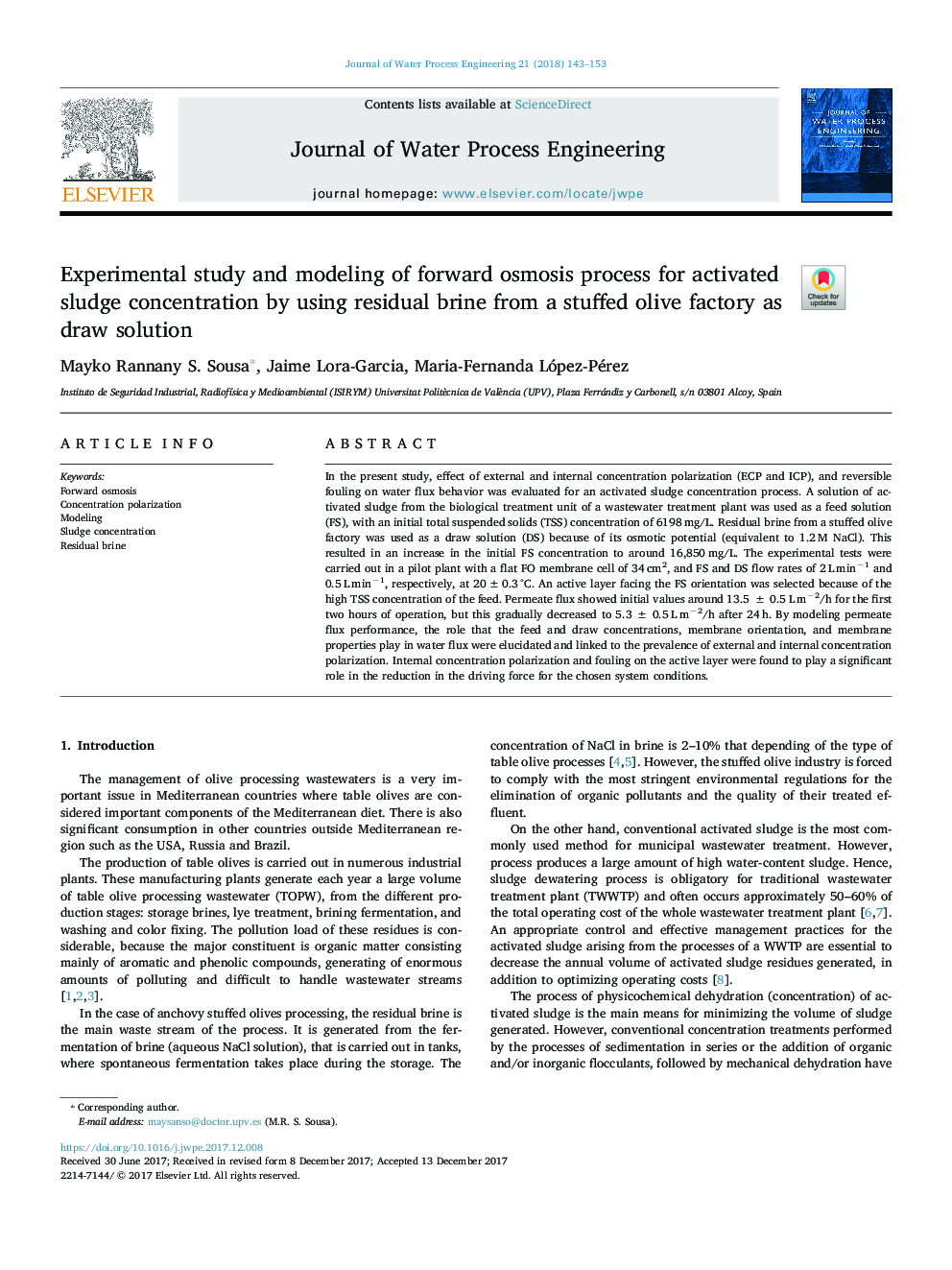| کد مقاله | کد نشریه | سال انتشار | مقاله انگلیسی | نسخه تمام متن |
|---|---|---|---|---|
| 6672041 | 1427551 | 2018 | 11 صفحه PDF | دانلود رایگان |
عنوان انگلیسی مقاله ISI
Experimental study and modeling of forward osmosis process for activated sludge concentration by using residual brine from a stuffed olive factory as draw solution
ترجمه فارسی عنوان
بررسی تجربی و مدل سازی فرایند اسمز معکوس برای غلظت لجن فعال با استفاده از نمک های باقی مانده از یک کارخانه زیتون پر شده به عنوان راه حل رسم
دانلود مقاله + سفارش ترجمه
دانلود مقاله ISI انگلیسی
رایگان برای ایرانیان
کلمات کلیدی
اسمز معکوس قطبش تمرکز، مدل سازی، غلظت لجن، نمک های باقی مانده،
موضوعات مرتبط
مهندسی و علوم پایه
مهندسی شیمی
مهندسی شیمی (عمومی)
چکیده انگلیسی
In the present study, effect of external and internal concentration polarization (ECP and ICP), and reversible fouling on water flux behavior was evaluated for an activated sludge concentration process. A solution of activated sludge from the biological treatment unit of a wastewater treatment plant was used as a feed solution (FS), with an initial total suspended solids (TSS) concentration of 6198â¯mg/L. Residual brine from a stuffed olive factory was used as a draw solution (DS) because of its osmotic potential (equivalent to 1.2â¯M NaCl). This resulted in an increase in the initial FS concentration to around 16,850â¯mg/L. The experimental tests were carried out in a pilot plant with a flat FO membrane cell of 34â¯cm2, and FS and DS flow rates of 2â¯Lâ¯minâ1 and 0.5â¯Lâ¯minâ1, respectively, at 20 ±0.3â¯Â°C. An active layer facing the FS orientation was selected because of the high TSS concentration of the feed. Permeate flux showed initial values around 13.5â¯Â±â¯0.5â¯Lâ¯mâ2/h for the first two hours of operation, but this gradually decreased to 5.3â¯Â±â¯0.5â¯Lâ¯mâ2/h after 24â¯h. By modeling permeate flux performance, the role that the feed and draw concentrations, membrane orientation, and membrane properties play in water flux were elucidated and linked to the prevalence of external and internal concentration polarization. Internal concentration polarization and fouling on the active layer were found to play a significant role in the reduction in the driving force for the chosen system conditions.
ناشر
Database: Elsevier - ScienceDirect (ساینس دایرکت)
Journal: Journal of Water Process Engineering - Volume 21, February 2018, Pages 143-153
Journal: Journal of Water Process Engineering - Volume 21, February 2018, Pages 143-153
نویسندگان
Mayko Rannany S. Sousa, Jaime Lora-Garcia, Maria-Fernanda López-Pérez,
